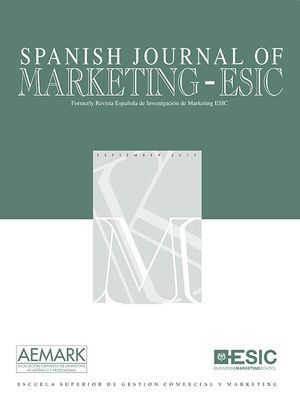El éxito del marketing viral se inicia cuando los individuos se implican en la apertura y el renvío de mensajes virales, de ahí la importancia de conocer cuáles son los factores determinantes de este proceso. En el presente estudio se analizan cuáles son los factores referidos al capital social del individuo y a las características del mensaje (remitente, asunto y contenido) que influyen en la dinámica viral y se establecen diferentes tipologías de receptores en función de su contribución a la viralidad de un mensaje. El análisis empírico permite concluir que la implicación del individuo en el proceso de apertura y renvío está relacionado con la pertenencia a una red no demasiado amplia, cohesionada y con contactos frecuentes. Asimismo, el contenido del mensaje es el elemento fundamental para el renvío.
The success of viral marketing starts when individuals are involved in the opening-forwarding process, therefore, it is vital to understand the factors that determine this process. In the current paper, we explore how individuals’ social capital and the message characteristics (source, subject, and content) impact the intention to open and forward viral messages. In addition, we propose a typology of individuals according to their contribution to the viral dynamics. The empirical analysis shows that the individuals’ involvement in the opening-forwarding process is related to small networks, strong ties, and frequent contacts. Moreover, the message content is a relevant determinant of email forwarding.
El presente trabajo forma parte de una línea de investigación que ha sido financiada, en convocatoria pública competitiva, por las Consejerías de Economía y de Educación de la Junta de Castilla y León (Proy. VA001B10-1).
Profesoras de la Universidad de Valladolid. Facultad de CC. Económicas y Empresariales. Campus de Esgueva. 47011 Valladolid. Direcciones electrónicas de contacto





